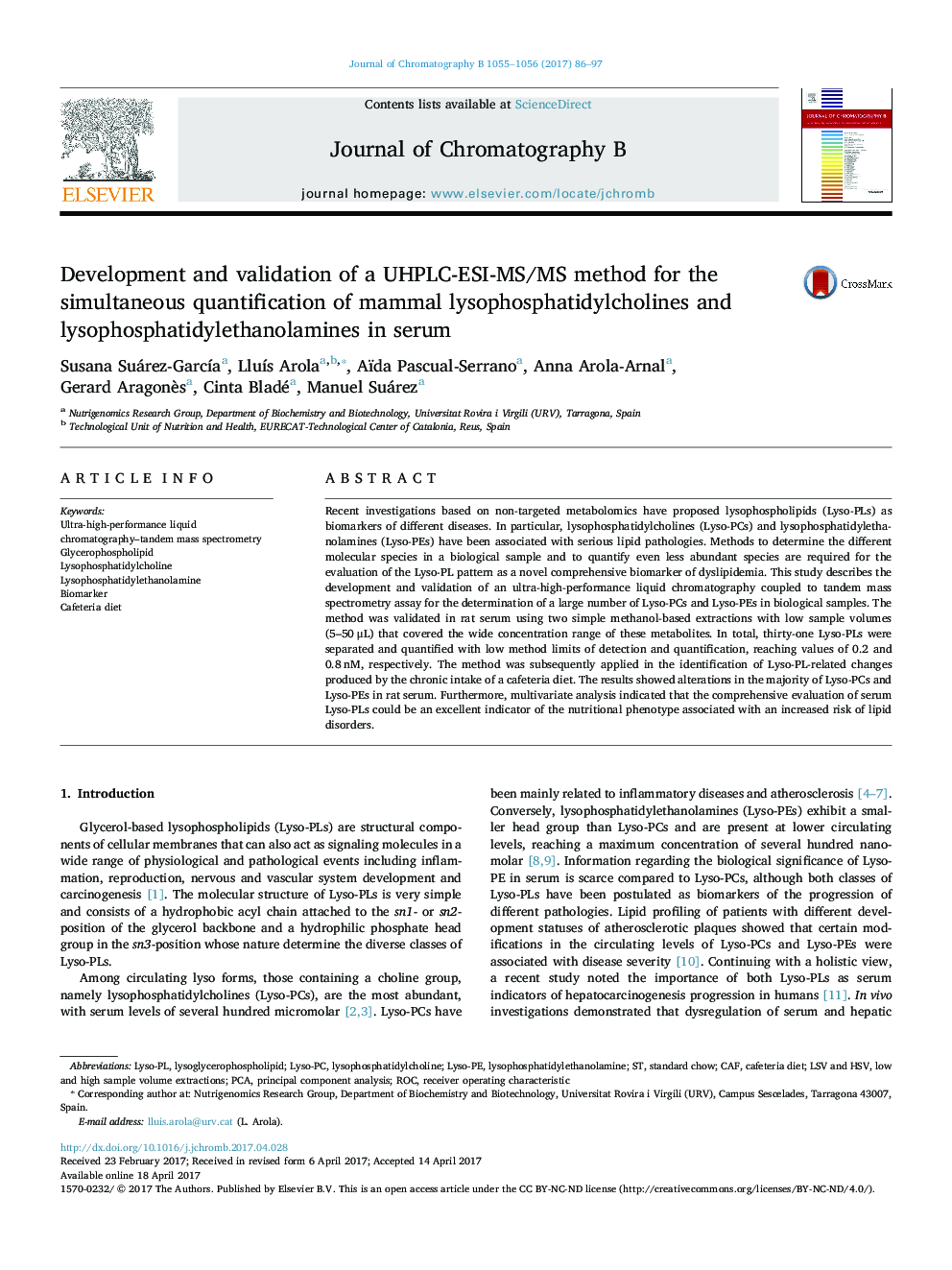| Article ID | Journal | Published Year | Pages | File Type |
|---|---|---|---|---|
| 5136330 | Journal of Chromatography B | 2017 | 12 Pages |
â¢UHPLC- + ESI-MS/MS method for glycerol-based lysophospholipid determination.â¢Lysophosphatidylcholine and lysophosphatidylethanolamine characterization in serum.â¢Separation of individual species within both classes of lipids.â¢Quantification of low-abundance lysophospholipid species.â¢Lysophospholipids as biomarkers of nutritional phenotype in cafeteria-fed rats.
Recent investigations based on non-targeted metabolomics have proposed lysophospholipids (Lyso-PLs) as biomarkers of different diseases. In particular, lysophosphatidylcholines (Lyso-PCs) and lysophosphatidylethanolamines (Lyso-PEs) have been associated with serious lipid pathologies. Methods to determine the different molecular species in a biological sample and to quantify even less abundant species are required for the evaluation of the Lyso-PL pattern as a novel comprehensive biomarker of dyslipidemia. This study describes the development and validation of an ultra-high-performance liquid chromatography coupled to tandem mass spectrometry assay for the determination of a large number of Lyso-PCs and Lyso-PEs in biological samples. The method was validated in rat serum using two simple methanol-based extractions with low sample volumes (5-50 μL) that covered the wide concentration range of these metabolites. In total, thirty-one Lyso-PLs were separated and quantified with low method limits of detection and quantification, reaching values of 0.2 and 0.8 nM, respectively. The method was subsequently applied in the identification of Lyso-PL-related changes produced by the chronic intake of a cafeteria diet. The results showed alterations in the majority of Lyso-PCs and Lyso-PEs in rat serum. Furthermore, multivariate analysis indicated that the comprehensive evaluation of serum Lyso-PLs could be an excellent indicator of the nutritional phenotype associated with an increased risk of lipid disorders.
